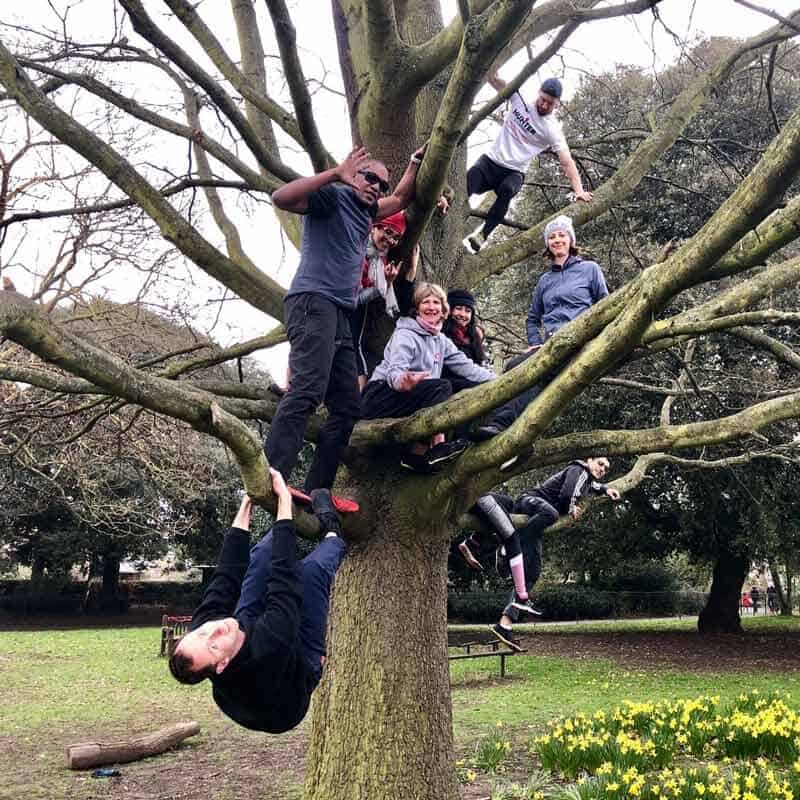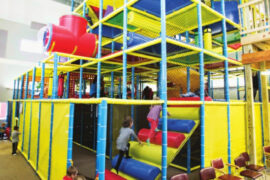Safe Tree Climbing for Kids: A Parental Guide to Nature’s Playground
Hello, wonderful parents! Are you looking to introduce your children to the timeless joy of tree climbing? Perfect! You’ve found the ultimate guide to turn this outdoor activity into an exciting and safe adventure for your little ones. ??
Tree climbing is not just a fun pastime; it’s an excellent opportunity for kids to improve their physical strength, coordination, and problem-solving skills. Plus, it nurtures their connection to nature and boosts their confidence with every branch they conquer!
? Choosing the Right Tree for Climbing
First things first, finding the perfect tree is essential for a secure climbing experience. Look for a tree with these kiddo-friendly characteristics:
- Sturdy Branches: Opt for trees with healthy, robust branches that can support your child’s weight without any signs of weakness or decay.
- Low Starting Branches: Young climbers will need branches within their reach – usually no higher than their chest level when standing.
- Close Branch Arrangement: Ensure branches are spaced close enough for little arms and legs to move between them easily.
Tips for Safe Tree Selection:
- Avoid trees near power lines or overhanging roofs and structures.
- Ensure no brambles, poison ivy, or harmful insects are present.
- Opt for deciduous trees like oaks and maples, which typically have better branch structures for climbing.
?? Essential Safety Gear for Tree Climbing
Though tree climbing can be done without specialized equipment, certain safety gear can provide extra peace of mind:
- Helmets: A climbing helmet will protect your child’s head from bumps and falling debris.
- Non-slip Shoes: Footwear with good grip helps prevent slips and falls.
While some also suggest harnesses and ropes for added safety, these are usually recommended for older children or more technical tree climbing activities.
? Learning Basic Tree Climbing Techniques
Begin by teaching the fundamental moves and awareness skills that will keep your child secure as they navigate through the branches:
- Encourage them to maintain three points of contact with the tree at all times (either two hands and a foot or two feet and a hand).
- Show them how to test each branch with a slight pull to ensure it can bear their weight before fully transferring onto it.
- Teach the importance of moving slowly and deliberately, avoiding sudden jumps or moves that could startle them or cause them to lose their balance.
As a parent, it’s crucial to supervise closely, especially as they learn these techniques and get comfortable with heights and movements within the tree.
? Supervision and Setting Boundaries
Effective supervision is about being present, not just watchful. Engage with your child as they explore, offering guidance when necessary:
- Discuss and set clear boundaries for how high they can climb.
- Stay within quick reach, especially for younger climbers who may need more direct assistance.
- Encourage your child to communicate what they’re doing and how they feel as they climb – Are they comfortable? Is a branch feeling unstable?
Tree climbing is about building trust with your child. Assure them that while they’re learning to assess risks, you’re there to help keep them safe.
Creating a Positive Climbing Environment
Start by choosing a cool, temperate day for tree climbing to ensure your child’s comfort. You also want to:
- Encourage breaks and offer plenty of hydration options, including water or electrolyte-rich drinks.
- Monitor for signs of fatigue – climbing can be more physically demanding than it appears.
Remember, the goal is to have fun, learn, and create lasting outdoor memories. With this guide, your child’s tree climbing adventures are bound to be delightful and rewarding. So lace up those shoes, grab a helmet, and let’s climb to new heights safely and joyfully!
Stay tuned for more in-depth insights on specific climbing techniques, games, and activities to enhance the tree-climbing experience for your child. Each branch they master is a step toward becoming more agile, perceptive, and courageous. Aim for the sky, little climbers! ?

5 Essential Preparations for Parents Before Tree Climbing
Preparing for your child’s tree climbing adventure ensures a fun and worry-free experience. Here are five key things you should know:
- Assess the Weather Conditions: A clear, calm day minimizes risks associated with wind or wet branches. Check the forecast and plan accordingly to avoid any weather-related issues.
- Pre-Climb Tree Health Check: Before any feet leave the ground, examine the tree for signs of disease, rotting, or loose bark. A healthy tree means a safer climb.
- Establish a Clear Set of Rules: Rules like ‘No climbing on broken or dead branches,’ and ‘Always climb within sight,’ help your child understand their limits and keep safety in focus.
- Dress for Success: Equip your child in appropriate attire. This includes long pants to prevent scratches, fitted clothes to avoid catches, and gloves if necessary for extra grip.
- Emergency Readiness: Have a first aid kit on hand, know the nearest hospital or clinic location, and carry a mobile phone for quick communication should an emergency arise.
Encouraging Climbing Confidence and Skill Development
Positive reinforcement plays a pivotal role in any child’s climbing experience. Compliment their tenacity, celebrate milestones, and offer gentle critiques to improve their skills. As their confidence grows, so too will their climbing capabilities.
Interactive Climbing Games and Activities
Here are a few fun games and activities to turn tree climbing into an engaging learning experience:
- Pretend Play: Encourage your child to imagine they’re on a jungle expedition or a castle tower lookout to foster imagination.
- Find-and-Seek: Create a scavenger hunt in and around the tree, prompting your child to climb to certain branches safely to retrieve items or markers.
- Wildlife Watch: Turn their attention to the surrounding fauna, teaching them to spot birds, insects, and squirrels, which can be a natural incentive to climb responsibly.
These games not only entertain but also encourage mental agility and a keen eye for the environment.
Wrap-Up Thoughts and Next Steps in Your Child’s Climbing Journey
As your child’s tree climbing skills advance, consider enrolling them in a climbing course or exploring more advanced climbing equipment. Remember, every child climbs at their own pace, and the journey is just as important as the destination.
Tree climbing isn’t just about reaching the top; it’s about embracing nature, overcoming challenges, and enjoying the upward journey- together. Keep these tips in mind, and your family is sure to enjoy many seasons of safe and happy climbing.
For more great fun click here. For more information see here
Disclaimer
The articles available via our website provide general information only and we strongly urge readers to exercise caution and conduct their own thorough research and fact-checking. The information presented should not be taken as absolute truth, and, to the maximum extent permitted by law, we will not be held liable for any inaccuracies or errors in the content. It is essential for individuals to independently verify and validate the information before making any decisions or taking any actions based on the articles.




